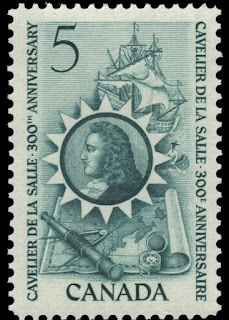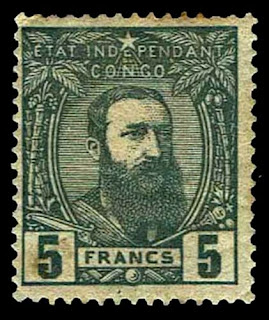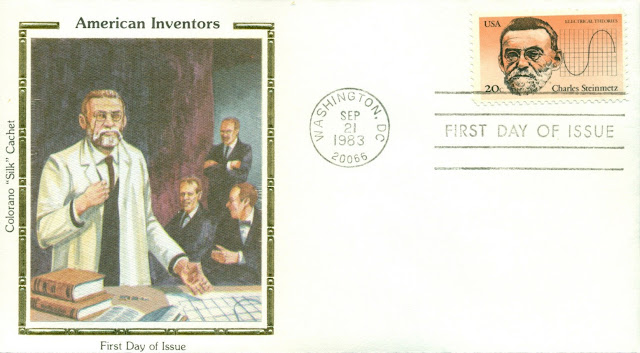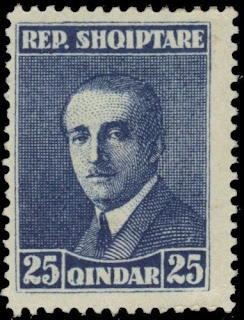1682 – Robert Cavelier de La Salle discovers the mouth of the Mississippi River, claims it for France and names it Louisiana.
René-Robert Cavelier, Sieur de La Salle (November 22, 1643 – March 19, 1687) was a 17th-century French explorer and fur trader in North America. He explored the Great Lakes region of the United States and Canada, the Mississippi River, and the Gulf of Mexico. He is best known for an early 1682 expedition in which he canoed the lower Mississippi River from the mouth of the Illinois River to the Gulf of Mexico and claimed the entire Mississippi River basin for France.
La Salle is often credited with being the first European to traverse the Ohio River, and sometimes the Mississippi as well. It has now been established that Joliet and Marquette preceded him on the Mississippi in their journey of 1673–74, and the existing historical evidence does not indicate that La Salle ever reached the Ohio/Allegheny Valley.
In early 1679, La Salle's expedition built Fort Conti at the mouth of the Niagara River on Lake Ontario. There they loaded supplies from Fort Frontenac into smaller boats (canoes or bateaux), so they could continue up the shallow and swiftly flowing lower Niagara River to what is now the location of Lewiston, New York. There the Iroquois had a well-established portage route which bypassed the rapids and the cataract later known as Niagara Falls.
In addition to the forts, which also served as authorized agencies for the extensive fur trade, La Salle's visits to Illinois and other Indians cemented the French policy of alliance with Indians in the common causes of containing both Iroquois influence and Anglo-American settlement. He also gave the name Louisiana to the interior North American territory he claimed for France, which lives on in the name of a US state.
French and Canadian stamp depicting René-Robert Cavelier, Sieur de La Salle
1821 Born: Charles Baudelaire, French poet and critic (d. 1867)
Charles Pierre Baudelaire (9 April 1821 – 31 August 1867) was a French poet who also produced notable work as an essayist, art critic, and pioneering translator of Edgar Allan Poe.
His most famous work, a book of lyric poetry titled Les Fleurs du mal (The Flowers of Evil), expresses the changing nature of beauty in the rapidly industrializing Paris during the mid-19th century. Baudelaire's highly original style of prose-poetry influenced a whole generation of poets including Paul Verlaine, Arthur Rimbaud and Stéphane Mallarmé, among many others. He is credited with coining the term "modernity" (modernité) to designate the fleeting, ephemeral experience of life in an urban metropolis, and the responsibility of artistic expression to capture that experience.
Stamps from France and Monaco depicting Charles Baudelaire
1835 Born: Leopold II of Belgium (d. 1909)
Leopold II (9 April 1835 – 17 December 1909) was King of the Belgians from 1865 to 1909. Born in Brussels as the second but eldest surviving son of Leopold I and Louise of Orléans, he succeeded his father to the Belgian throne in 1865 and reigned for 44 years until his death – the longest reign of any Belgian monarch. He died without surviving male heirs. The current Belgian king descends from his nephew and successor, Albert I.
Leopold was the founder and sole owner of the Congo Free State, a private project undertaken on his own behalf. He used Henry Morton Stanley to help him lay claim to the Congo, the present-day Democratic Republic of the Congo. At the Berlin Conference of 1884–1885, the colonial nations of Europe authorized his claim by committing the Congo Free State to improving the lives of the native inhabitants. Leopold ignored these conditions and ran the Congo using the mercenary Force Publique for his personal gain. He extracted a fortune from the territory, initially by the collection of ivory, and after a rise in the price of rubber in the 1890s, by forced labor from the native population to harvest and process rubber. He used great sums of the money from this exploitation for public and private construction projects in Belgium during this period. He donated the private buildings to the state before his death, to preserve them for Belgium.
Leopold's administration of the Congo was characterized by murder, torture, and atrocities, resulting from notorious systematic brutality. The hands of men, women, and children were amputated when the quota of rubber was not met. These and other facts were established at the time by eyewitness testimony and on site inspection by an international Commission of Inquiry (1904).
Millions of the Congolese people died: modern estimates range from 1 million to 15 million deaths, with a consensus growing around 10 million. Some historians argue against this figure, citing the absence of reliable censuses, the enormous mortality of diseases such as smallpox or sleeping sickness, and the fact that there were only 175 administrative agents in charge of rubber exploitation.
In 1908, the reports of deaths and abuse induced the Belgian government to take over the administration of the Congo from Leopold.
Stamps from Belgium and Belgian Congo depicting Leopold II
Leopold was the founder and sole owner of the Congo Free State, a private project undertaken on his own behalf. He used Henry Morton Stanley to help him lay claim to the Congo, the present-day Democratic Republic of the Congo. At the Berlin Conference of 1884–1885, the colonial nations of Europe authorized his claim by committing the Congo Free State to improving the lives of the native inhabitants. Leopold ignored these conditions and ran the Congo using the mercenary Force Publique for his personal gain. He extracted a fortune from the territory, initially by the collection of ivory, and after a rise in the price of rubber in the 1890s, by forced labor from the native population to harvest and process rubber. He used great sums of the money from this exploitation for public and private construction projects in Belgium during this period. He donated the private buildings to the state before his death, to preserve them for Belgium.
Leopold's administration of the Congo was characterized by murder, torture, and atrocities, resulting from notorious systematic brutality. The hands of men, women, and children were amputated when the quota of rubber was not met. These and other facts were established at the time by eyewitness testimony and on site inspection by an international Commission of Inquiry (1904).
Millions of the Congolese people died: modern estimates range from 1 million to 15 million deaths, with a consensus growing around 10 million. Some historians argue against this figure, citing the absence of reliable censuses, the enormous mortality of diseases such as smallpox or sleeping sickness, and the fact that there were only 175 administrative agents in charge of rubber exploitation.
In 1908, the reports of deaths and abuse induced the Belgian government to take over the administration of the Congo from Leopold.
Stamps from Belgium and Belgian Congo depicting Leopold II
1865 Born: Charles Proteus Steinmetz, Polish-American mathematician and engineer (d. 1923)
Charles Proteus Steinmetz (born Karl August Rudolph Steinmetz, April 9, 1865 – October 26, 1923) was a German-born American mathematician and electrical engineer and professor at Union College. He fostered the development of alternating current that made possible the expansion of the electric power industry in the United States, formulating mathematical theories for engineers. He made ground-breaking discoveries in the understanding of hysteresis that enabled engineers to design better electromagnetic apparatus equipment including especially electric motors for use in industry.
At the time of his death, Steinmetz held over 200 patents. A genius in both mathematics and electronics, he did work that earned him the nicknames "Forger of Thunderbolts" and "The Wizard of Schenectady". Steinmetz's equation, Steinmetz solids, Steinmetz curves, and Steinmetz equivalent circuit theory are all named after him, as are numerous honors and scholarships, including the IEEE Charles Proteus Steinmetz Award, one of the highest technical recognition given by the Institute of Electrical and Electronics Engineers professional society.
US stamp and First Day Cover depicting Charles Proteus Steinmetz
1961 Died: Zog I of Albania (b. 1895)
Zog I, King of the Albanians (Albanian: Naltmadhnija e tij Zogu I, Mbreti i Shqiptarëve, 8 October 1895 – 9 April 1961), born Ahmet Muhtar Zogolli, taking the surname Zogu in 1922, was the leader of Albania from 1922 to 1939. He first served as Prime Minister of Albania (1922–1924), then as President (1925–1928), and finally as the first and only King (1928–1939).
Albanian stamps depicting Zog I
Albanian stamps depicting Zog I













No comments:
Post a Comment